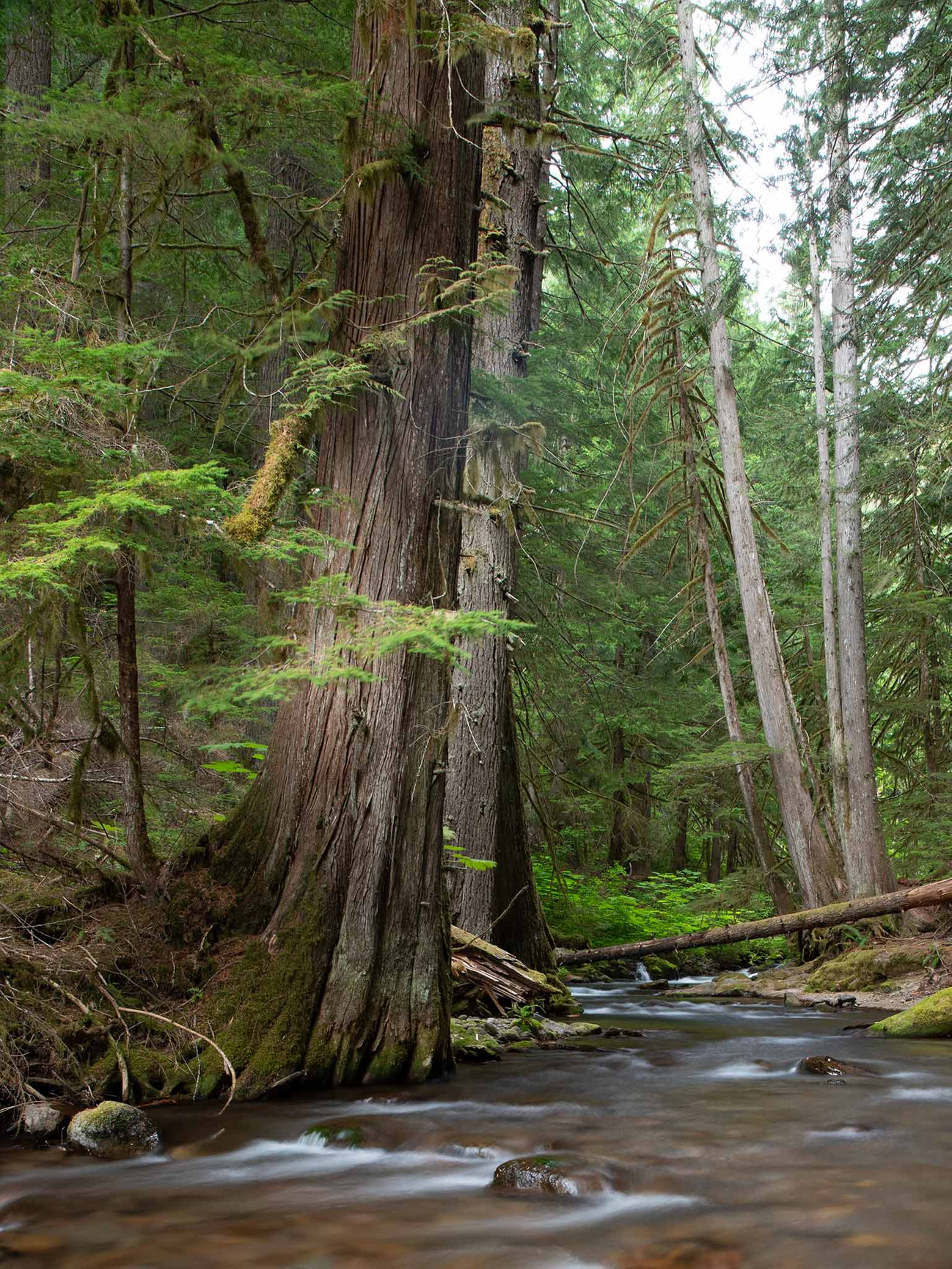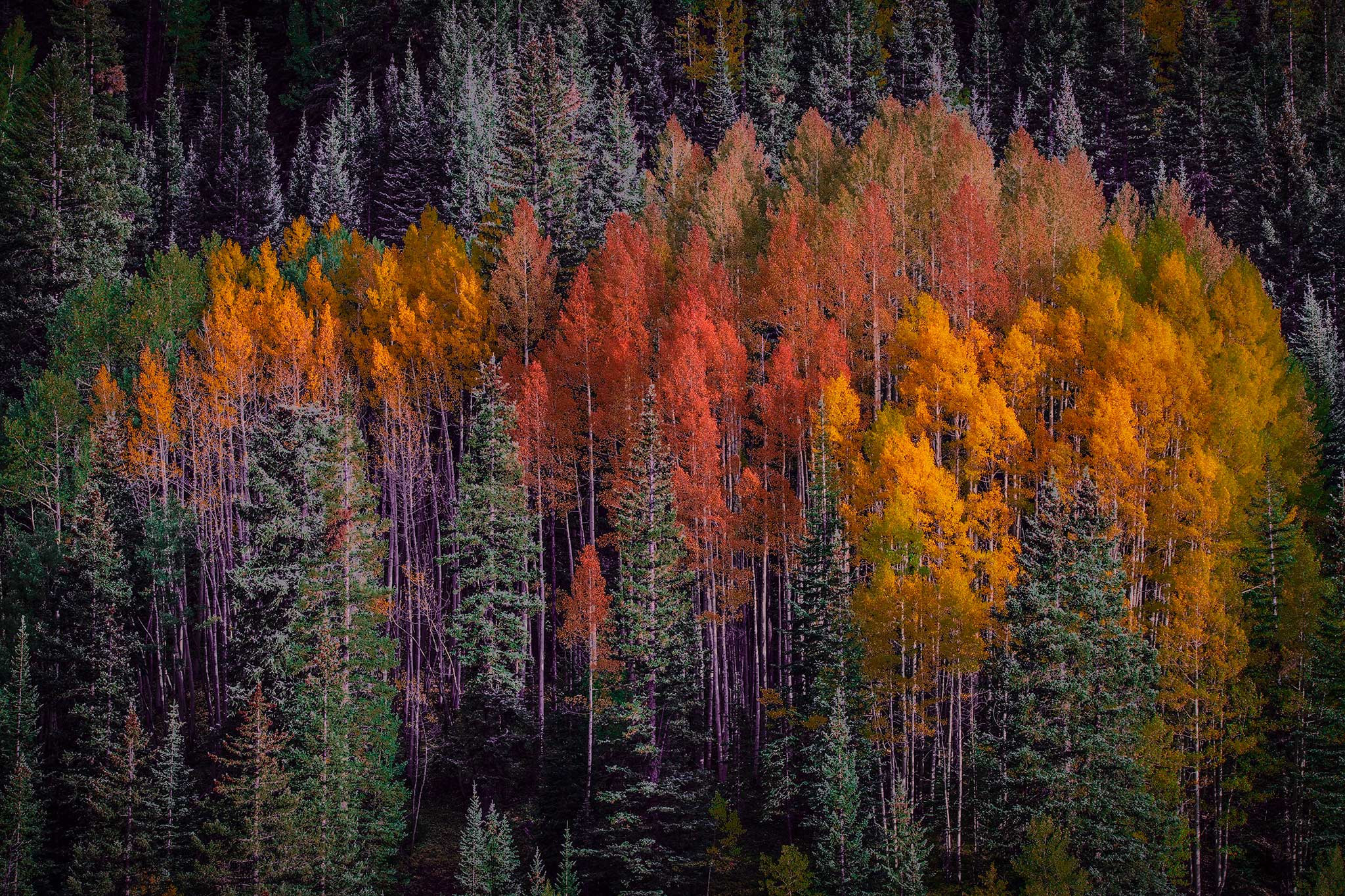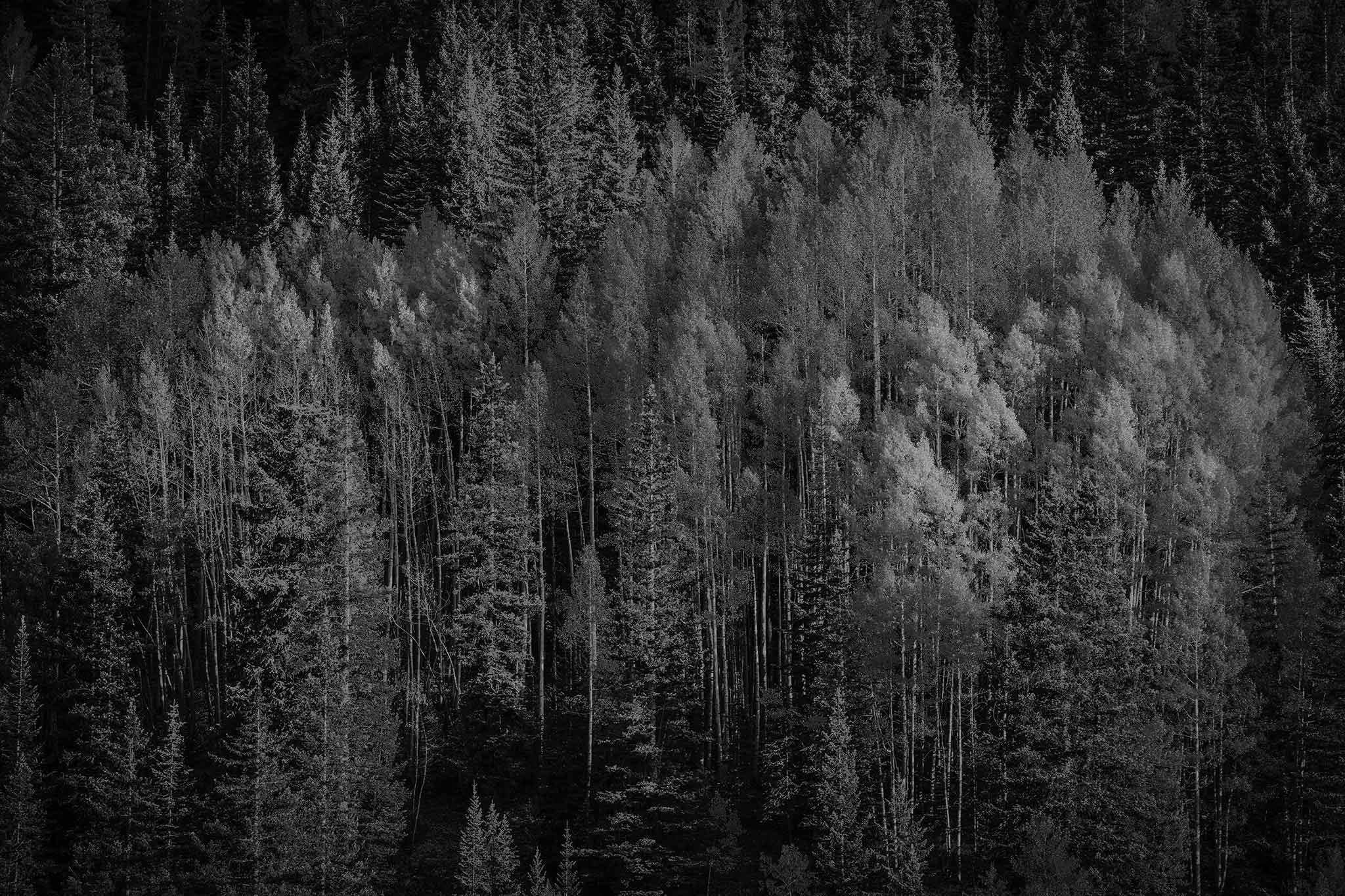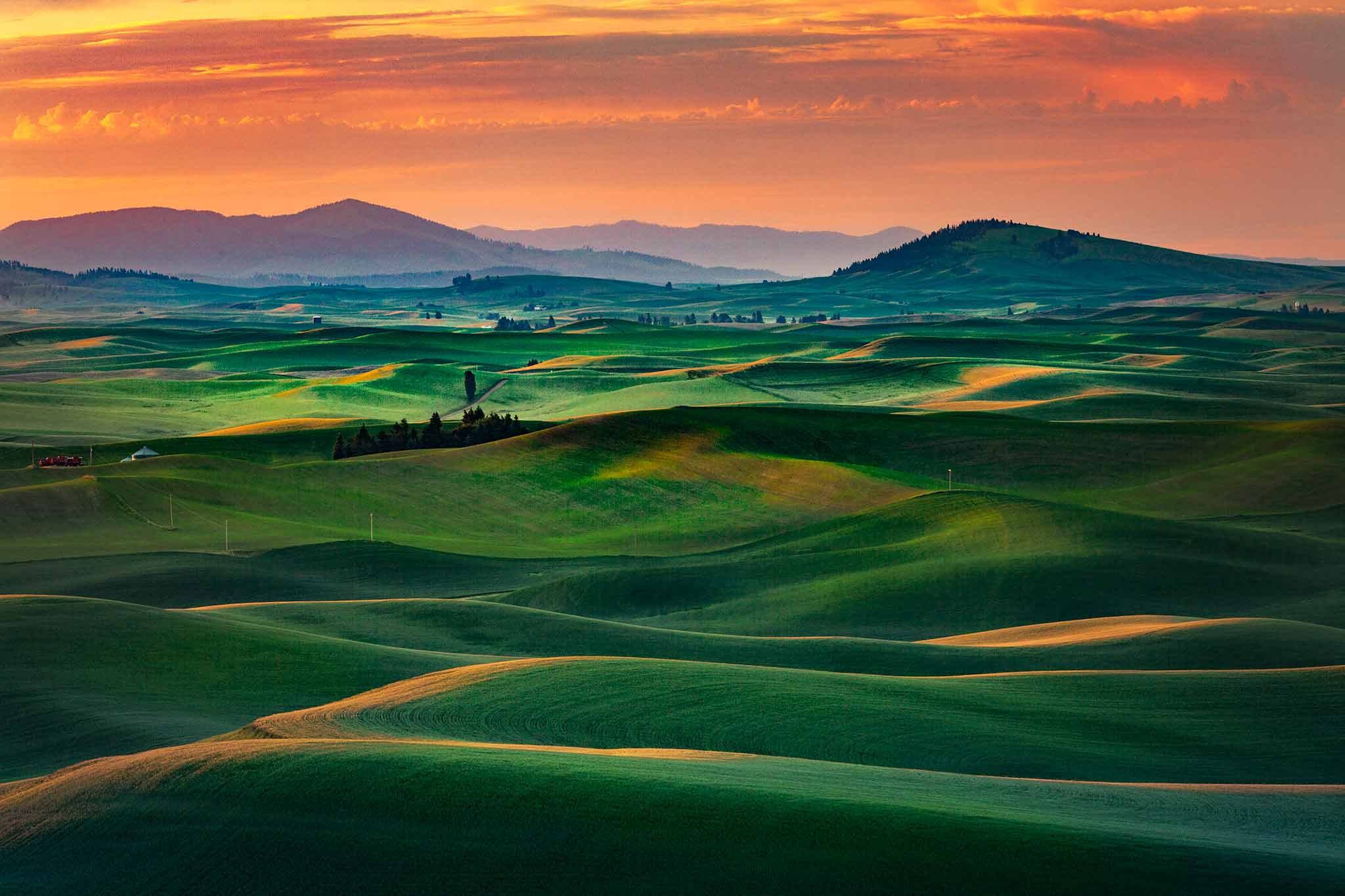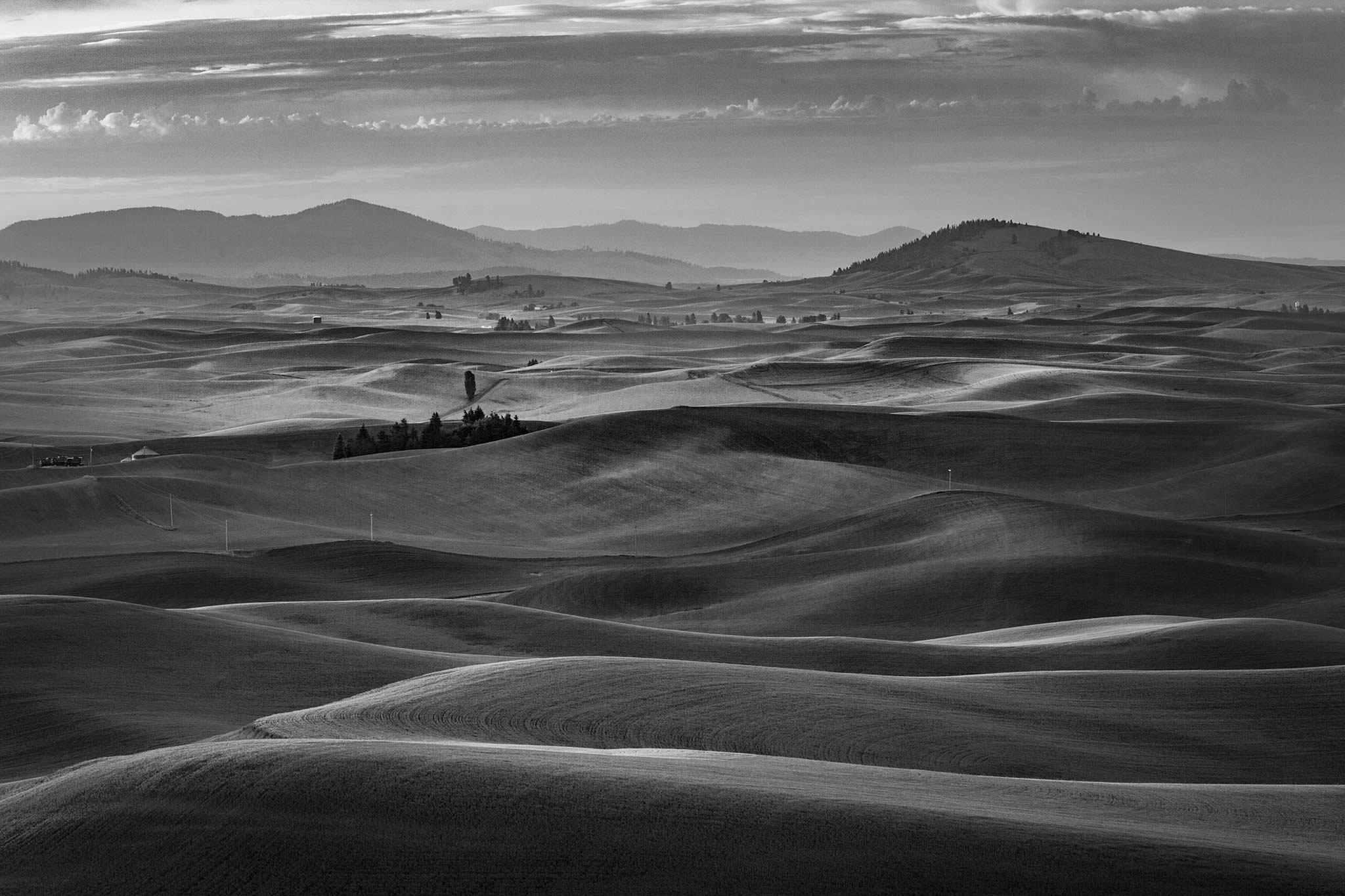Creating Depth
Our photographs are usually displayed in two dimensions….on paper, metal, canvas or face-mounted to acrylic. Yes, it is possible to have on printed on a three dimensional object such as a coffee cup or tee shirt, but this is not what we are referring to in creating depth with your photographs. Except for special purposes when we want a flat image, depth is quite desirable. For this article, we will be concentrating on the things you can do pre-processing to create depth.
There are three basic techniques to create depth. These are: including objects at various distances within the frame; utilizing focus and lack of focus; and, using light, color and shadows. Some of these techniques can be enhanced in post-processing. Techniques with color and light, particularly in portraiture, can also create depth. These techniques are more advanced and will not be discussed in this article.
Placing Objects at Various Distances
We all see and enjoy landscape photos that would be referred to as grand views. In these photos, the subject matter may be hundreds of yards or miles away. Yes, there may be some depth in those distant spires, but there is little you can do to add depth when the closest parts of your image are at a great distance. Much of landscape photography has a foreground, middle ground and possibly distant features. In these photos, a very slight change in camera position can greatly affect the composition and the flow of the viewer’s eye through the image.
A common technique is to have a strong foreground feature (or multiple features) that grab one’s attention for a moment before moving deeper into the photo. Examples might be a rock near one corner of the frame, colorful stones under water in the front of an image, a fern leaf, a group of wildflowers or a small pool of water along the beach. We refer to these foreground objects as anchors. They are the start of the journey through the image.
The middle ground may be the most important part of your image. This would be the case if you were photographing aspen trunks in the forest, a breaking wave, a hoodoo rock formation, or a person on the street. Positioning of middle ground objects or subjects is especially important and should be coordinated with the position of any anchor. Middle ground objects can frequently be placed at varying distances and in positions that enhance the depth of your photos. Doing so with a minimal amount of overlapping of these middle ground objects is desirable. When it is impossible to avoid overlapping, such as in a dense forest, using decreasing tonal values or sharpness of more distant tree can be helpful. Refer to the first two sets of images below to see compositional examples and challenges with overlapping subjects.
It is often possible to have a foreground anchor and a middle ground when your central subject it in the background…a building, canyon, a mountain, or solitary tree on a hill. It is the foreground and middle ground that create the depth.
It is also possible to create artistic compositions where the middle ground is skipped entirely. This technique is often used with a wide angle lens place very close to the foreground (such as wildflowers) with a dramatic landscape in the background. If you use this technique, be careful that your two subjects are complimentary rather than competitive.
The following images show some considerations when creating depth. Note that you may click on images in this article to see them larger.
Items in Focus and Out of Focus
If you have been in photography for any length of time, you know that keeping items in focus that are at varying distances from the lens is much easier if they are a long way away. Macro photographers have an easy time getting part of their image out of focus. This is the nature of lens capabilities. The only way for them to get varying distances in focus is to take multiple images at various focus distances, then blend them in post-processing. This technique is useful in landscape photography, as well. Wide angle lenses expand the depth of field and are able to keep a large range of distances in focus. Telephoto lenses compress the depth of field and can generally focus on a short range of distances for a single image.
Landscape photographers tend to love having everything in focus. This is not the way we actually see when we are viewing the real world. Our eyes can focus either close or far, but not both at the same time. But we usually want our fans to move throughout a print and see everything in focus. There are exceptions to this, especially when we want to emphasize a single subject, such as when macro photographers want us to see the the shape of a flower petal or the eyes of an insect. Photography of wildlife, people, and abstracts may also benefit from selective focus to create depth and draw us to their subject. Almost all of these photographers employ lenses that would be considered either short telephoto or long telephoto lenses.
In my opinion, selective focus could be explored successfully by many more photographers, but it is not often taught in the field. Selective focus works in simple, uncluttered images, but can also be useful to "unclutter" an image.
Taking multiple images with a telephoto lens and combining them with a process we call “stacking” can be successful, but the use of a longer lens compresses distances, thus decreasing depth. When you use this technique, be sure to evaluate whether your result is better using all of the stacked images or just a limited few.
When the overall scene gets a bit jumbled, such as in a forest, consider selective focus.
Using Light, Shadows and Color to Create Depth
Depth is also created with contrast, tone and saturation. Some of these features can be addressed in the field and some can be improved in post processing. Ansel Adams described pictorialist photographers as Fuzzy-wuzzies; those who tried to make a photography look like a painting. There is currently a renewed pictorial movement to this end, which I interpret as photographers needing to express individualism, creativity and emotion. It is an alternative when it seems like everything has been photographed before. Adams lived in a time where long exposures and small f/stops resulted in very sharp images front to back. Current day lenses and filters have additional capabilities, so painterly techniques such as intentional camera movement, long exposures to blur moving subjects, double exposures, and blurred vignettes are common now and need not be discouraged. Some of the resulting images may intentionally lack depth.
The balance of this article, will discuss other methods to create depth without necessarily compromising sharpness.
Painters have comparatively more flexibility in creating depth than photographers. Look at the work of Albert Bierstadt or just about any other acclaimed landscape artist and you will note how distant objects fade in tone, contrast and saturation. While we may love a clear day to show off that snowy mountain peak or fall forest slope, depth is lost on these days. Do not despair when it is foggy, hazy or smoky. These conditions can be used to advantage. This is a reason to be real careful when using the “dehaze” slider in post processing. It may defeat any attempt you are making to create depth, In may also create contrast and halos in undesirable areas.
We all love it when partly cloudy skies result in a patchwork of shadows traversing the Grand Canyon or alpine slopes. The patient (or fortuitous) photographer will can reap beautiful results from such situations. Look for these natural opportunities. Keep your camera out in the middle of the day when they often occur.
In general, it is good to have light on our subject and in areas that naturally lead to our subject. Finding these situations is not an everyday occurrence. Persistence and frequent shooting helps immensely. Just as light should lead to the subject, more distant areas will diminish in contrast as we get further from the image foreground. You may not notice this as you are shooting, but you can confirm it in post processing.
You will be more effective in having light and shadows create depth if details appear in those near black areas of the foreground as well as the faded lighter areas in the distance. An image with bold contrast will have little depth. This does not just apply to an entire image, but to localized areas of an image as well. But a very flat image (with all tones nearly the same) will also have little depth as we have seen above. So, it is necessary to have a broad range of tones including all the middle tones. Adams developed the Zone System which described this application of multiple tones to an image.
Color can confuse us. Oftentimes, two colors may have very similar grey scale values, which does not help create depth. It can be valuable to look at our color images in monotone to evaluate the tonal depth. A lack of tonal depth does not necessarily mean a bad result, but the subject of this article is how to create depth.
The best way to describe the above features is with side-by-side image comparisons.
Thinking about depth in the field can take your portfolio to the next level. Let me see your results!






